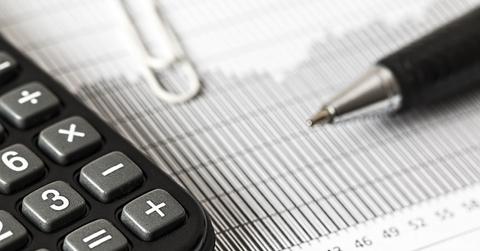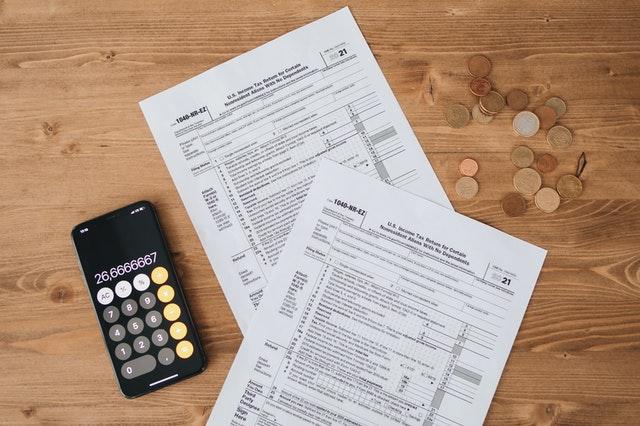Taxes 101 For The Self-Employed: What You Should Know

If you work for yourself, don’t put off paying your taxes until April. You’ll likely need to settle your tax bill every quarter if you own a business (or are otherwise self-employed). Failing to keep up with your obligations can result in penalties and interest—as too many entrepreneurs have learned the hard way.
Keep reading to find out if you should be paying quarterly estimated taxes, how to estimate what you owe, and the easiest ways to file.
Who Is Required to Pay Estimated Quarterly Taxes?
In general, independent earners such as small business owners, freelancers, and contractors must make estimated tax payments. While self-employment income is not subject to automatic federal, state, or FICA withholding, the IRS still expects to receive their due throughout the year.
Quarterly tax payments can also apply to untaxed income such as dividends, business distributions, or significant capital gains.
According to IRS guidelines, you must make estimated quarterly payments if:
- You’re a sole proprietor, partner or S-corporation shareholder, and you expect to owe at least $1000 (after subtracting deductions) when you file your return; or
- You’re a C-corporation shareholder, and you expect to owe at least $500 (after subtracting deductions) when you file your return.
However, you may not need to make estimated tax payments if you earn W-2 wages and you’ve asked your employer to withhold additional taxes from your paychecks. The same is true if you had no tax liability for the prior 12-month tax period (and you were a U.S. citizen or resident the entire time).
Note: You can ask your employer to adjust your tax withholding by giving them a new W-4. Use the IRS’s Tax Withholding Estimator to determine how much you should withhold.

When Are Estimated Taxes Due?
Estimated payments break down your annual tax bill into four installments. You’ll make payments in April, June, and September of the same year and in January of the following year.
Here are the dates to mark in your calendar:
- April 15 (January through March earnings)
- June 15 (April and May earnings)
- September 15 (June through August earnings)
- January 15 (September through December earnings)
As you may have noticed, the IRS does not follow typical business quarters regarding estimated taxes. Note also that you don’t have to make your January 15 payment if you file your annual tax return by January 31and pay your full balance due along with it.
Can I pay on a different schedule?
Yes. If you’d rather make smaller payments on a weekly, biweekly, or monthly basis, you can do so—as long as you pay enough before the end of each quarter. You can also pay your estimated taxes for the year all at once (on April 15, your first payment due date).
What if I can’t pay what I owe by the quarterly deadlines?
If you can’t meet one or more of the deadlines listed above, you can apply for an IRS payment plan online to reduce future penalties.
Estimating Your Taxable Income
To calculate how much to pay quarterly, you’ll need a reasonable estimate of the income and deductions you’ll report on your federal tax return. Keep your previous year’s tax return at hand (if you have one), as well as a record of any estimated payments you’ve already made for the year.

Safe Harbor Method
Estimating your projected earnings isn’t an exact science. Fortunately, the IRS offers a “safe harbor” from underpayment penalties for individuals who pay their quarterly estimated taxes in one of the following ways.
- You can pay 100% of your tax liability amount from the prior year, divided into four equal payments. For example, if you owed $5,000 for 2021, you’d send $1,250 each quarter in 2022. For individuals whose adjusted gross income was over $150,000 on their previous tax return, this percentage increases to 110%.
- You can pay 90% of your estimated tax liability for the current year. (Unless you’re a farmer or a fisherman, in which case you’ll only owe 66.67%. See IRS Publication 225: Farmer’s Tax Guide for more information).
The safe harbor method is best suited for those who have relatively consistent income from one year to the next, or who have a good idea of what their income will be. If you end up earning more than you did the previous year (and therefore underpaying on your estimated taxes), you may end up owing at year-end—but your tax bill will be interest-free.
Annualized Income Installment Method
If you typically see big swings in earnings (because your business is seasonal, for example), the Annualized Income Installment Method may be more useful in helping you avoid underpayment penalties.
With this method, you’ll separately calculate your tax liability before each quarterly deadline, using real-time business income. You can also factor in any (prorated) small business deductions. Instead of making four equal payments throughout the year, taxpayers who “annualize” their income tend to pay less one quarter and more the next.
IRS Publication 505 contains forms, schedules, and worksheets to help you calculate your payments using the Annualized Income Installment Method. It can get complex—but if your business doesn’t have the resources to hire a tax preparer, tax preparation software or even a good tax calculator can help you do the math.
How to Pay Your Quarterly Taxes
When you’re ready to send in your estimated payments, a few different options are available. You can file your quarterly taxes with Form 1040-ES by mail, or you can pay online, over the phone, or even with your mobile device—thanks to the IRS2Go app.
You can also register for the Electronic Federal Tax Payment System (EFTPS), which gives you the option of viewing your payment history.
Remember: in addition to paying your estimated taxes; you’ll need to file your annual tax return to reconcile what you paid with what you earned. Doing so may reveal that you’ve over-paid—in which case you’re eligible for a refund.
This was written by Drake Forester and originally appeared on Score.





